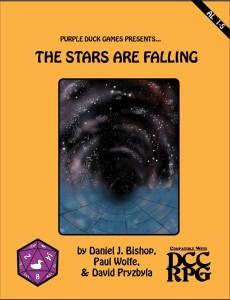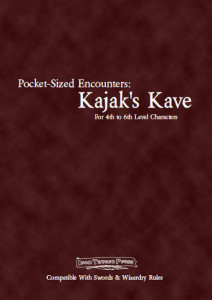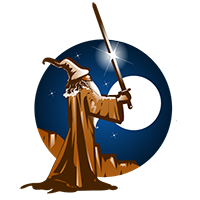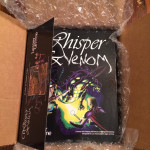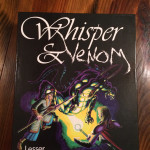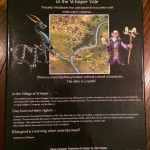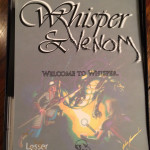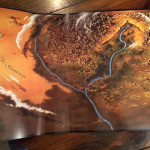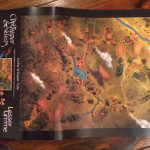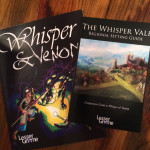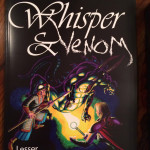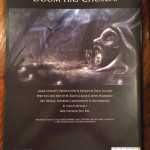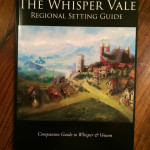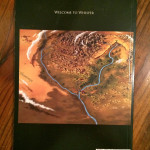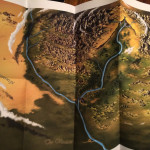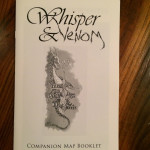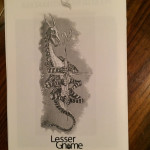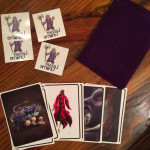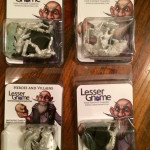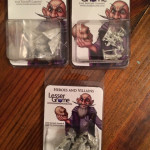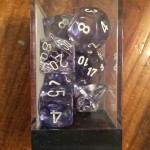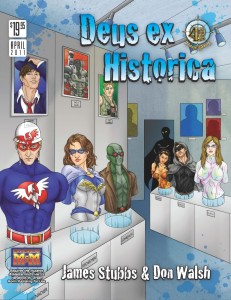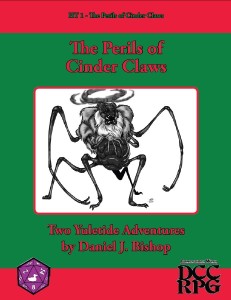 Today’s post is part of an in-between DCC RPG Actual Play session postings to provide a little more insight into the cast of characters and players that make up the campaign.
Today’s post is part of an in-between DCC RPG Actual Play session postings to provide a little more insight into the cast of characters and players that make up the campaign.
Adam plays Jargon the Halfling. Adam joined later in the campaign, but several of us knew him from another online game and meeting up at Origins 2013 and knew he would fit in with the group. Adam writes today about Jargon.
Background
I was fairly late to joining the DCC campaign. I was introduced to Jeffrey and Matt from the early beginnings of a Dungeonslayers campaign. My first actual game of DCC was during Origins 2013, when I got the chance to meet up with Kelly, Matt, Jeffrey, and another gaming friend. A few more one shot sessions were held, and I was hooked. So much so that I bought my first set of Zocchi dice from the man himself on the convention floor.
My playstyle has always been “damage from a distance”, though initially I was not sure what I wanted to play in the campaign. Having a chance to see the player make-up, a Halfling was the only thing missing.
Jargon
Jargon was born from the need for a Luck battery for the party, and as it would seem, was the best choice. His given name is Loford Underfoot, though due to his mushed words as a child, and blatant disregard for repeating himself, the nickname Jargon was given. Through the years, he eventually enjoyed the name and took it as his own. He is an odd little thing, neutral in temperament, though tends to sway easily in the direction of his peers.
Years of ridicule have made him want to be generally accepted by those he holds in high regards (for one reason or another, he looks up to Baptist, no pun intended). As such, he walks a fine line between the neutral and chaotic temperament. He has a secret Napoleon complex, in that he wants to be in charge but only by being a logical voice of reason. He relies on sarcasm and snide comments to make the best of a situation in which he feels he is better than…which happens to be most of the situations in which he finds himself. He is primarily fixated on amassing treasures and riches, and will do whatever he can to ensure he continues growing his own personal coffers.
Combat wise, I play him a bit cautiously and know full well he is a bit squishy. I gained this knowledge during one of the Origins games where I had a Halfling get one-shot and leaving me bewildered at how easily it was accomplished. I prefer the sneak and stab method…or the “shoot the hell out of that short bow” method if the situation can allow it.
Most Memorable Moment
It is hard to boil down just one of the most memorable, even in the short(er) time I have been playing with this group. I would have to say it was the moment Tsanth turned a spell result from himself, and placed it on Jargon. Jargon was dead, as it happens in this session. Fortunately, Tsanth was willing to give the little Halfling a hug of love from the Great Cthulhu. The spell result required Tsanth to brand himself, as opposed to doing so, he placed the brand on Jargon’s chest. It is the first time something like this has ever happened to my characters, and I feel like the snide little remarks that reference the event whenever possible, really play into Jargon’s personality.

